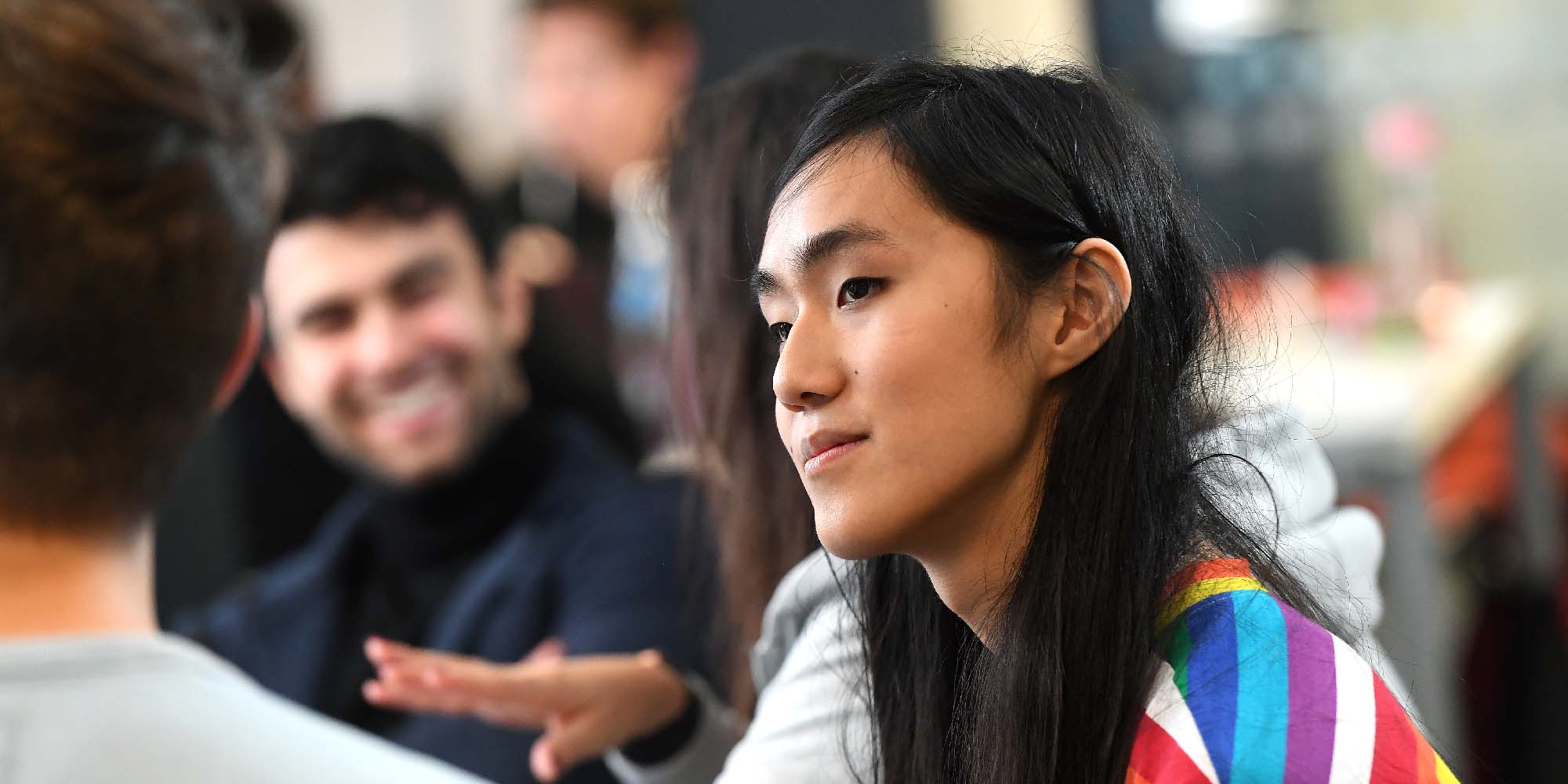Postgraduate research opportunities Self-organized magnetic and droplet states for quantum technologies (Theory focus)
ApplyKey facts
- Opens: Friday 7 June 2024
- Deadline: Sunday 1 December 2024
- Number of places: 1
- Duration: 42 months
- Funding: Home fee, Stipend
Overview
The project will investigate self-organized phases in cold atoms with light-mediated coupling. We are looking at laser cooled thermal atoms or quantum degenerate gases driven by a detuned laser beam with feedback from a single mirror or a cavity leading to the spontaneous emergence of intriguing spatial structures, typically hexagonal in 2D [1,2]. Depending on the interest of the student, it can have a theoretical or experimental focus.Eligibility
An upper second-class UK Honours degree or overseas equivalent in Physics is required. If English is not your first language, you must have an IELTS score of at least 6.5 with no component below 5.5.

Project Details
The project will investigate self-organized phases in cold atoms with light-mediated coupling (see [1] for a review). We are looking at laser cooled thermal atoms or quantum degenerate gases driven by a detuned laser beam with feedback from a single mirror or a cavity leading to the spontaneous emergence of intriguing spatial structures, typically hexagonal in 2D [1,2]. Depending on the interest of the student, it can have a theoretical or experimental focus and would be either supervised by Prof Ackemann or Dr Robb as lead supervisor.
In all realizations considered, a spatial structure of internal or external degrees of freedom forms spontaneously from the unstructured atomic cloud. Pump photons are scattered by this structure into spatial sidebands. The interference of these sidebands creates an optical lattice which will then sustain the atomic structure.
In a quantum degenerate gas, the density of the condensate will be modulated due to optomechanical interactions. The emerging structure breaks simultaneously the phase symmetry and translational symmetry, i.e. is an example of an intriguing state of matter called “supersolid”, combining crystalline features with superfluidity [3,4].
In thermal laser-cooled atoms, a magnetic structure can form in the ground state of the atoms due to optical pumping nonlinearities. We demonstrated not only anti-ferromagnetic ordering but spatio-temporal states involving quadrupolar degrees of freedom with interesting links to condensed matter systems and dissipative time crystals [5,6].
The aims of the current project are to explore and establish the potential of these self-organized states for quantum technologies. This involves:
- To understand the dynamics of 1D and 2D supersolids and its relation to the excitation spectrum.
- Calculate the atomic and photon correlations and entanglement produced by the nonlinear interactions and their potential use in quantum metrology.
- Investigate the feasibility of interferometry based on splitting and recombining optomechanical droplets and the possibility of beating the standard quantum limit due to entanglement [7,8].
- To investigate the feasibility of creating optomechanical droplets with spin.
- To provide detailed imaging and understanding of the magnetic atomic structure by optical and microwave means by measurements of the complete Stokes parameters of the transmitted pump and dedicated probe beams.
- To analyse the excitation spectrum of the system (magnons) above and below the threshold of ordering and look at the mechanisms responsible for the stabilization of the particular phases, in particular the highly interesting time-dependent phase and its relation to dissipative time crystals.
- Investigate the potential existence of skyrmions and magnetic bubbles for topology-protected information storage.
- To use the fully nonlinear theory developed to describe the complex light matter interaction in arbitrarily oriented magnetic field to understand the behaviour of alkaline-atom based magnetometers at arbitrary light levels. This aspect will be explored in collaboration with the strong activities on high-performance magnetometers within the Experimental Quantum Optics and Photonics group.
The focus of investigations can be adjusted to the student’s interest.
We have a close collaboration with the Institut de Physique de Nice, Universite Cote d’Azur, France, with the possibility of a placement.
The work is performed within the International Graduate School for Quantum Technologies
You will also be part of the Scottish University Alliance (SUPA) graduate school.
The funding is for 42 months.
Visit EQOP (Experimental Quantum Optics and Photonics Group) for further information
[1] G. Labeyrie, J. G. M. Walker, G. R. M. Robb, R. Kaiser, and T. Ackemann. Ground-state coherence versus orientation: competing mechanisms for light-induced magnetic self-organization in cold atoms. Phys. Rev. A 105, 023505 (2022)
[2] G. Labeyrie, E. Tesio, P. M. Gomes, G.-L. Oppo, W. J. Firth, G. R. M. Robb, A. S. Arnold, R. Kaiser, and T. Ackemann. Optomechanical self-structuring in a cold atomic gas. Nature Phot. 8, 321-325 (2014)
[3] G. R. M. Robb, E. Tesio, G.-L. Oppo, W. J. Firth, T. Ackemann, R. Bonifacio. Quantum Threshold for Optomechanical Self-Structuring in a Bose-Einstein Condensate. Phys. Rev. Lett. 114, 173903 (2015).
[4] I. Kresic, G. R. M. Robb, G.-L. Oppo, and T. Ackemann. Generating multiparticle entangled states by self-organization of driven ultracold atoms. Phys. Rev. Lett 131, 163602 (2023).
[5] I. Kresic, G. Labeyrie, G.R.M. Robb, G.-L. Oppo, P.M. Gomes, P. Griffin, R. Kaiser, and T. Ackemann. Spontaneous light-mediated magnetism in cold atoms. Communications Physics 1, 33 (2018)
[6] G. Labeyrie, J. G. M. Walker, G. R. M. Robb, R. Kaiser, and T. Ackemann. Spontaneously sliding multipole spin density waves in cold atoms. Phys. Rev. Lett 132, 143402 (2024).
[7] J. G. M. Walker, G. R. M. Robb, G.-L. Oppo, and T. Ackemann. Dynamics of optomechanical droplets in a Bose-Einstein condensate. Phys. Rev. A 105, 063305 (2022).
[8] G. R. M. Robb, J. G. M. Walker, G.-L. Oppo, and T. Ackemann. Continuous Acceleration Sensing Using Optomechanical Droplets. Atoms 12(3), 15 (2024).
Further information
The scope of the project is potentially quite broad and can involve experimental, theoretical, and computational aspects. The investigations can be adjusted and focused onto the student’s interest and ambition. If the student is mainly interested in theory, lead supervisor is Dr Robb, if the student is mainly interested in experiment, lead supervisor is Prof Ackemann.
Funding details
The funding covers home fees and the UKRI standard stipend rate, £19,237 per year at 2024/25 rate. EU citizens with settled status can also apply.
While there is no funding in place for opportunities marked "unfunded", there are lots of different options to help you fund postgraduate research. Visit funding your postgraduate research for links to government grants, research councils funding and more, that could be available.
Apply
Number of places: 1
To read how we process personal data, applicants can review our 'Privacy Notice for Student Applicants and Potential Applicants' on our Privacy notices' web page.
Physics
Programme: Physics



